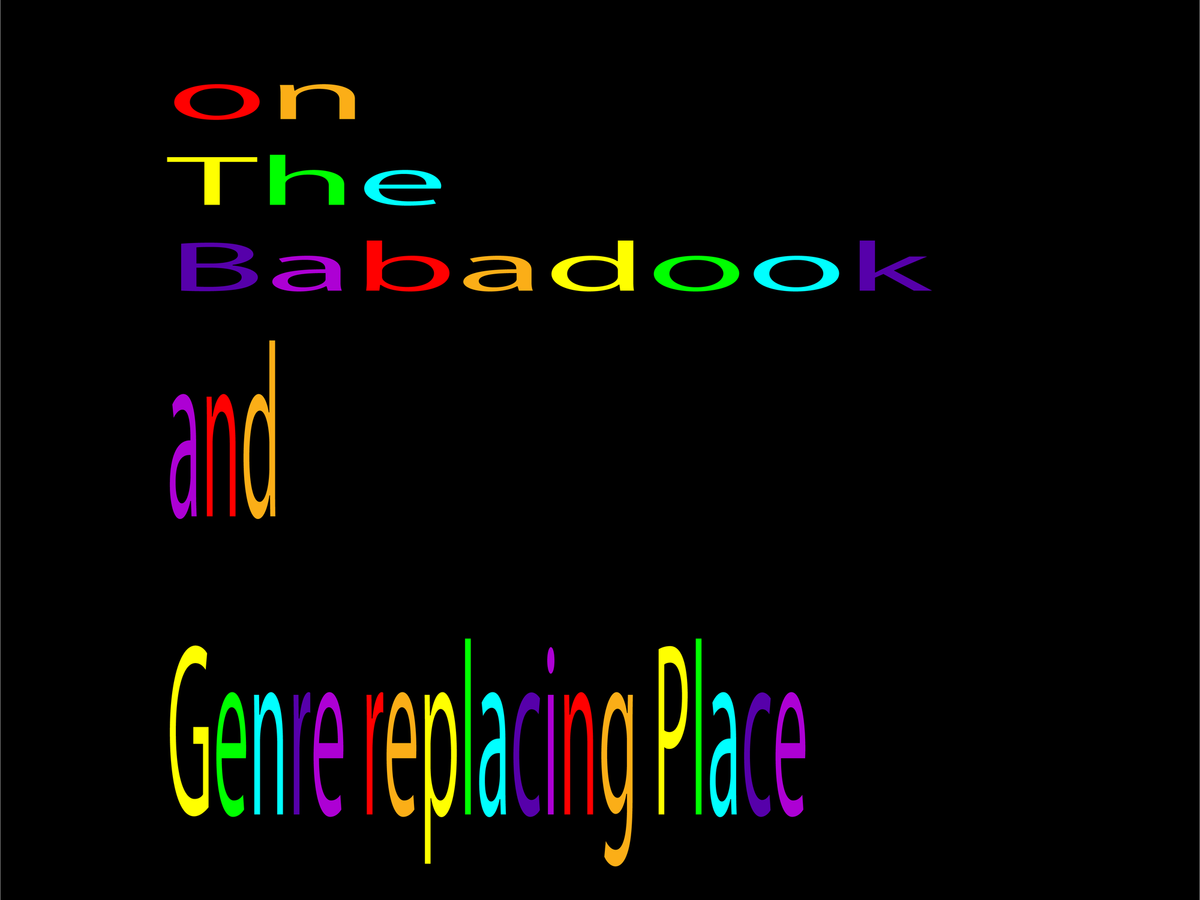on this and that, #2 Oct 2025
on The Babadook and Genre replacing Place

on The Babadook and Genre replacing Place
Do people make the place, or does the place make the people? And how important is it for us as Australians to make films that are distinctly Australian?
This Sunday, I want to talk about genre and its important role in films that adopt a placeless, textual identity; films where the location is somewhat ambiguous and not a large component in driving the story forward. Jennifer Kent’s acclaimed 2014 film The Babadook is no exception. By stripping away any clear sense of place, Kent forces us to focus on emotion and atmosphere — and in doing so, blurs our sense of time and location. As someone who grew up in Adelaide, I can tell you, for better or for worse, Adelaide is like a country town disguised as a city. To me, it feels like a placeless place. In fact, the more I write this, the more I’m thinking maybe The Babadook isn't actually placeless; it’s just set in Adelaide.
A horror film set in suburbia, the story follows Amelia, a single mother grieving the death of her husband, who passed the day she gave birth to her son, Samuel. Samuel is now 6, and to say there is some brooding resentment from Amelia towards her son would be an understatement. Following Samuel’s discovery of a mysterious book, “The Babadook”, the family becomes terrorised by a haunting figure bearing the same name. In an artistic exploration of grief, motherhood and the complexities of domesticity in the Western world, I would argue that nothing about this film is distinctly Australian, but if that is the case, what is it that we as an audience hold on to in relating to and empathising with these characters?
Genre, diva, it’s genre, the answer is genre.
However, in saying this, The Babadook itself has been credited for subverting Australian sub-genres. If Australian Gothic (think Picnic at Hanging Rock) and Ozploitation (think Razorback) had a Venn diagram, The Babadook would be in the sliver of the centre. However, one instance where it differs from the typical tropes is that, unlike Peter Weir’s Picnic at Hanging Rock, which highlights the vast Australian landscape, The Babadook is set in suburbia. The choice of a suburban setting is a relatable extension of its exploration of universal themes, appealing to a broader audience outside of Australia. After all, most of us live in suburbia rather than the vast Australian outback. At the same time, The Babadook also veers away from Australian Gothic in its graphic violence towards the end of the film, and although it seems far from an Ozploitation genre film, there are moments that are blatantly horror. Examples of this are the cockroaches Amelia hallucinates crawling out of the kitchen wall and Amelia’s possessed murder of her dog.
It was barely screened in cinemas upon its initial release because it was considered “too arthouse” for general audiences. It’s beautiful, it’s eerie, it’s moody. Kent’s choice to make the location somewhat ambiguous compels us, as an audience, to be more receptive to her use of German Expressionism in portraying the Babadook, alongside her more arthouse approach to horror. If this film were overtly Australian, its use of tone and global inspiration would be undermined and replaced with a sense of distrust and inauthenticity.
It's an Australian film, set in Australia and made by Australians, but it doesn’t really feel that way. I’ve thought about this way too much over the past few weeks, particularly the pressure on Australian films to constantly project “Australian-ness” to the rest of the world. Will we get to a point in our national cinema where Australian accents become normalised? (probably not) Where there is no longer a need for our films to rely on culturally specific narratives to explore themes of identity? I sure as fuck hope not, but I’m just thinking out loud here.
Going back to my original rant re: genre, I would argue that in the case of The Babadook, and other genre films, genre can replace things like “Australian-ness,” however as soon as you enter spaces that are driven thematically by explorations of identity (think coming of age, family drama, etc), to me, the genre cannot carry the film in the same way it does in the case of The Babadook. Kent’s film is not only hard to place because it subverts the conventions of its predecessor Australian horror films, but its ‘placelessness’ and reliance on genre to carry the tone and style also draw you into believing the story world and its ambiguity. As an Adelaidean, it does not feel distinctly Adelaidean, but it works.
So, thank you, Ms Jennifer Kent, for putting my home, so-called city, on the cinematic map (I don’t think that was your intention).
Your film rocks, even though it's set in Adelaide.
References
Australian Communications and Media Authority and Screen Australia. 2020. “Supporting Australian Stories on our Screens, Options Paper.”March. Accessed October 1, 2024. https://www.screenaustralia.gov.au/getmedia/5d48ef01-b755-4618-80da-297afab1331d/Supporting-australian-stories-on-our-screens-options-paper.pdf?ext=.pdf(open in a new window)
Allison Ruth Craven. (2020) The ambiguities of ancestry: antiquity, ruins and converging traditions of Australian Gothic Cinema. Studies in Australasian Cinema 14:3, pages 162-177.
Balanzategui, J. (2017). The Babadook and the haunted space between high and low genres in the Australian horror tradition. Studies in Australasian Cinema, 10(2), 18-32. https://doi.org/10.1080/17503175.2017.1308907




Comments ()